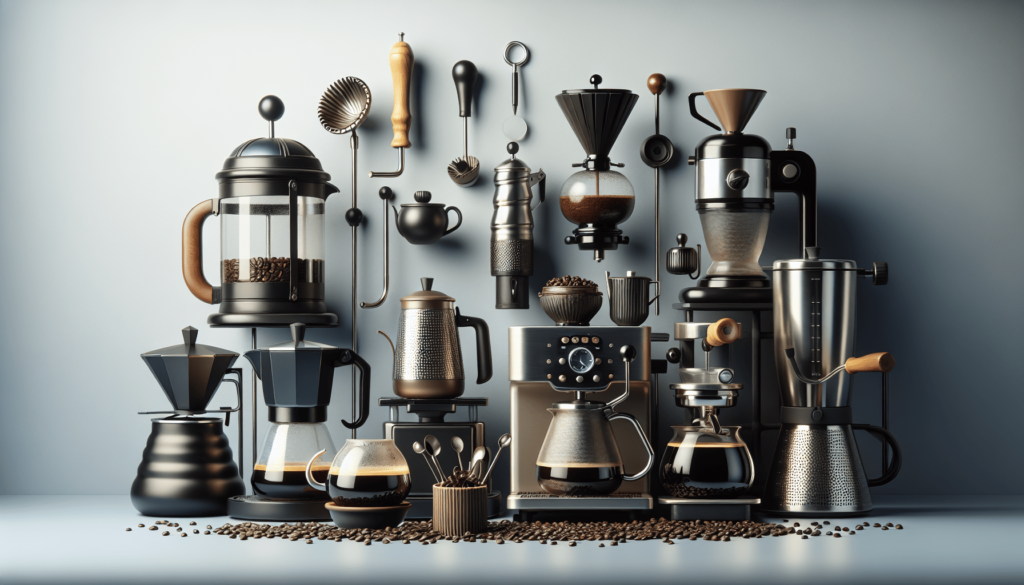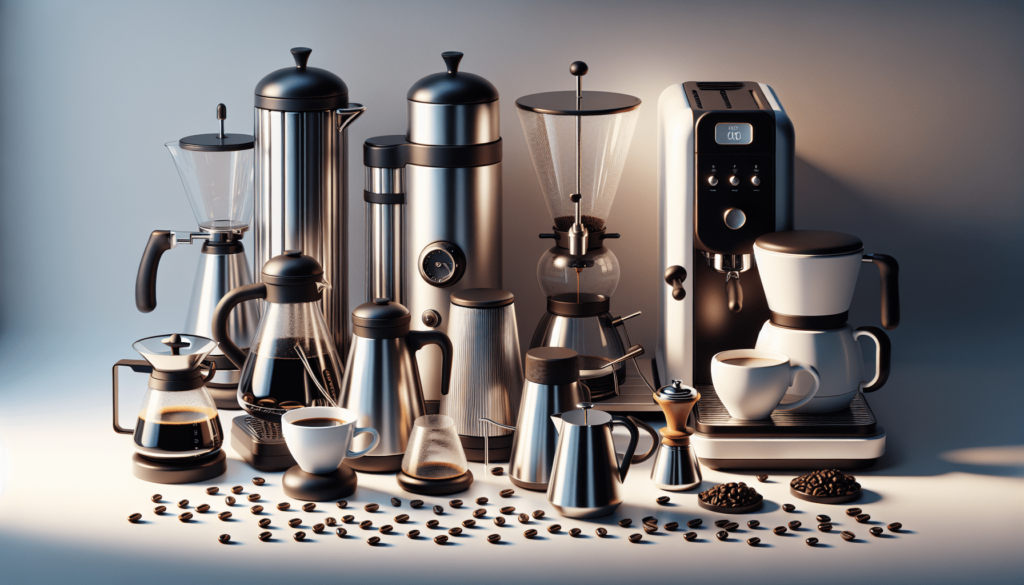Which coffee brewing method produces the most caffeine? This question might have crossed your mind as you pour yourself a cup of joe. After all, for many of us, the perfect brew is as much about the caffeine kick as it is about the rich, aromatic flavor. This guide will walk you through various coffee brewing methods, providing insights into their caffeine content and other factors that influence how much of the stimulant ends up in your cup.
Understanding Caffeine and Its Effects
Before diving into the brewing methods, it’s essential to understand what caffeine is and how it affects your body. Caffeine is a natural stimulant most commonly found in coffee, tea, and various other beverages and foods. It acts on the central nervous system to temporarily ward off drowsiness and restore alertness. The amount of caffeine you consume can impact everything from your energy levels to your sleep patterns.
How Caffeine Content Is Measured
Caffeine content is usually measured in milligrams. You might see labels like “mg of caffeine per ounce” or “mg per cup.” These values can vary widely based on factors including the type of coffee bean, grind size, water temperature, and brewing time.
Factors Influencing Caffeine Extraction
Several variables influence how much caffeine makes it into your cup. These include:
- Coffee Bean Type: Different varieties of coffee beans contain varying levels of caffeine.
- Grinding Size: Finer grounds usually extract more caffeine.
- Water Temperature: Hotter water generally results in higher caffeine extraction.
- Brewing Time: The longer the brew time, the more caffeine gets extracted.
Understanding these factors helps you control the level of caffeine in your drink and customize your coffee experience.
The Brewing Methods
Now, let’s explore different coffee brewing methods and how they stack up in terms of caffeine content.
Espresso
Espresso is a concentrated form of coffee made by forcing a small amount of nearly boiling water through finely-ground coffee beans. It’s typically served in small, strong shots.
Caffeine Content: An average shot of espresso (about 1 ounce) contains approximately 63 mg of caffeine.
Factors:
- High Pressure: The pressure used in brewing espresso extracts caffeine efficiently.
- Short Brewing Time: Though the extraction time is brief, the high concentration of coffee grounds maximizes caffeine content.
Drip Coffee
Drip coffee is one of the most common methods in homes and offices. It involves pouring water over ground beans and letting gravity do its work.
Caffeine Content: An 8-ounce cup of drip coffee usually contains around 95 mg of caffeine.
Factors:
- Longer Brew Time: The prolonged contact between water and coffee grounds aids caffeine extraction.
- Medium Grind: Typically uses medium to coarse grind size, which balances flavor and caffeine content.
French Press
The French Press involves steeping coarse coffee grounds in hot water, then pressing the grounds out.
Caffeine Content: An 8-ounce cup from a French Press contains roughly 80-100 mg of caffeine.
Factors:
- Immersion Time: Longer steeping times increase the amount of caffeine extracted.
- Coarse Grind: Uses a coarser grind, which impacts the rate of extraction.
Cold Brew
Cold brew is made by steeping coarse coffee grounds in room temperature or cold water for an extended period.
Caffeine Content: A typical 12-ounce serving contains about 150-200 mg of caffeine.
Factors:
- Extended Brewing: Often steeped for 12-24 hours, extracting a high amount of caffeine.
- Coarse Grind: Mitigates over-extraction of bitter flavors while still resulting in high caffeine content.
AeroPress
The AeroPress uses air pressure to push water through the coffee grounds, resulting in a robust and quick brew.
Caffeine Content: A typical cup contains around 100 mg of caffeine.
Factors:
- Quick Brew Time: The shorter brewing time limits caffeine extraction compared to other methods.
- Fine to Medium Grind: Uses a finer grind than French press but coarser than espresso.
Percolator
This old-school method involves boiling water that cycles through the coffee grounds in a continuous process.
Caffeine Content: An average 8-ounce cup contains about 80-100 mg of caffeine.
Factors:
- Re-circulation: Water continuously passes through the coffee grounds, maximizing extraction.
- Long Brew Time: Over-extraction can occur, resulting in a higher caffeine content but also a more bitter taste.

Comparing Caffeine Content by Brewing Method
Let’s see how these methods compare when summarized in a table for easier understanding.
| Brewing Method | Serving Size | Caffeine Content (mg) | Brew Time | Grind Size |
|---|---|---|---|---|
| Espresso | 1 oz | 63 | 25-30 sec | Fine |
| Drip Coffee | 8 oz | 95 | 4-6 min | Medium |
| French Press | 8 oz | 80-100 | 4 min | Coarse |
| Cold Brew | 12 oz | 150-200 | 12-24 hrs | Coarse |
| AeroPress | 8 oz | 100 | 1-2 min | Fine/Medium |
| Percolator | 8 oz | 80-100 | 7-10 min | Medium/Coarse |
Optimizing Your Caffeine Intake
It’s not just about picking the brewing method; it’s also about tweaking the variables within that method to get the exact caffeine content you desire.
Adjusting Grind Size
As a general rule, a finer grind will extract more caffeine, albeit at the cost of potentially over-extracting and introducing unwanted flavors. Coarser grinds, on the other hand, might result in a smoother taste but lower caffeine content.
Modifying Brew Time
Longer brew times usually translate to higher caffeine content. If you’re using a French Press, for instance, you might let it steep a bit longer for that extra caffeine kick. However, balance is key to avoid bitterness.
Temperature Control
Hotter water can extract more caffeine but can also bring out more bitter compounds. Most experts recommend brewing your coffee with water just below boiling point, around 195°F to 205°F (90°C to 96°C).

Myths and Misconceptions
There are several myths about caffeine content based on brewing methods, and it’s important to set the record straight.
Dark Roast vs. Light Roast
A common misconception is that dark roast coffee has more caffeine than light roast. In reality, the roasting process can slightly reduce the caffeine content; thus, light roast often contains a bit more caffeine.
Strength and Caffeine
Many people equate a stronger flavor with higher caffeine. However, strength and caffeine content are not directly correlated. You could have a robust-tasting coffee with moderate caffeine and a mild-tasting brew packed with it.
Decaf Isn’t Always Decaf
Decaffeinated coffee still contains some caffeine, though in much smaller amounts (typically around 2-5 mg per 8-ounce cup). It’s not entirely caffeine-free but is a suitable option for those looking to reduce intake.
Best Practices for Consistent Results
If you’re looking to maintain consistent caffeine levels in your coffee, consider the following tips:
Measure Your Coffee
Using a kitchen scale to measure your coffee grounds can significantly improve the consistency of your brews. Aim for a coffee-to-water ratio of approximately 1:15 or 1:18, depending on your preference.
Use Fresh Beans
Freshly roasted beans can make a significant difference in both flavor and caffeine content. Beans lose their potency over time, so try to use them within two weeks of roasting.
Keep Equipment Clean
Regularly cleaning your coffee-making equipment ensures that no old coffee oils or residues interfere with the brewing process. This keeps your coffee tasting fresh and ensures consistent extraction.
Final Thoughts
Knowing which brewing method produces the most caffeine can significantly enhance your daily coffee ritual. Whether you prefer the convenience of drip coffee, the robust nature of espresso, or the smooth complexity of cold brew, understanding the variables that affect caffeine extraction allows you to tailor your brew to your exact liking.
Remember, the best coffee is the one that meets your needs — whether it’s a high-caffeine jolt to start your day or a milder brew to enjoy leisurely. You’re now well-equipped with the knowledge to make an informed choice. So, go ahead and find that perfect brew that suits your caffeine needs and flavor preferences.
So which brewing method will you try next? Whether you’re an espresso fanatic or a cold brew connoisseur, there’s always room for exploring and enjoying the vast and wonderful world of coffee.
